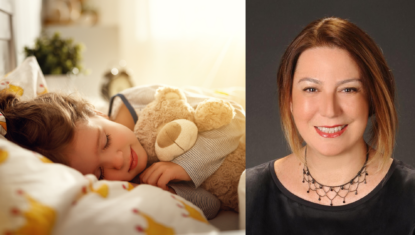02/06/2023
Ottawa, Ontario — Friday June 2, 2023

With long waitlists for hospital-based sleep studies, there is a need for diagnostic tests that are easier, less expensive and more accessible. Sleep stages, airflow, breathing effort and oxygen levels can be monitored through overnight video polysomnography performed in the sleep laboratory, which is currently accepted as a gold standard test to confirm the diagnosis and determine the severity of obstructive sleep apnea (OSA) in children with symptoms of sleep disordered breathing. However, there is limited access due to high cost and high resource requirements.
Polygraphy is a lower-cost alternative that can be performed in the hospital or at home, however, night-to-night variability of polygraphy in children has not been known until now. A recent study published in Pediatric Pulmonology, led by Dr. Refika Ersu, Investigator at the CHEO Research Institute and pediatric respirologist at CHEO, indicates a single night polygraphy is reliable for OSA diagnosis in children with symptoms of sleep-disordered breathing.
OSA is common in children and is characterized by occlusion of airway during sleep causing snoring, restless sleep and observed apneas at night as well as sleepiness or hyperactivity during the day. OSA can lead to academic difficulties, behavioral problems and cardiovascular consequences, so timely diagnosis and treatment is important. Polygraphy, which is a simpler test used to monitor airflow, breathing effort and oxygen levels during sleep, can also be used either to screen or to diagnose OSA. Two polygraphy studies were performed in the hospital for each of the 48 participants and results were compared. It was discovered that there were no significant differences between the two polygraphy studies, meaning single polygraphy studies can be effective in diagnosing OSA in children. Polygraphy studies can be performed at home and can be more comfortable as children sleep in their own environment and the study takes fewer measurements.
“Children may tolerate a polygraphy study better as less measurements are done with less stickers and they are sleeping in their usual environment. Home sleep studies are potentially more feasible for families because they can choose the date, there is no travel required, and they do not have to organize childcare or take time off work,” said Dr. Ersu, a professor at the University of Ottawa.
The study findings support the use of a single polygraphy study to diagnose obstructive sleep apnea in children. These tests are simpler and more affordable and due to their accessibility, can help alleviate the current waitlists and allow more children to receive timely diagnoses from the comfort of their own home.
